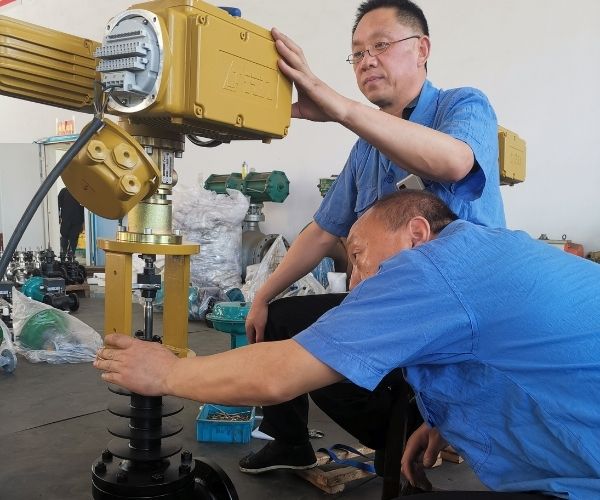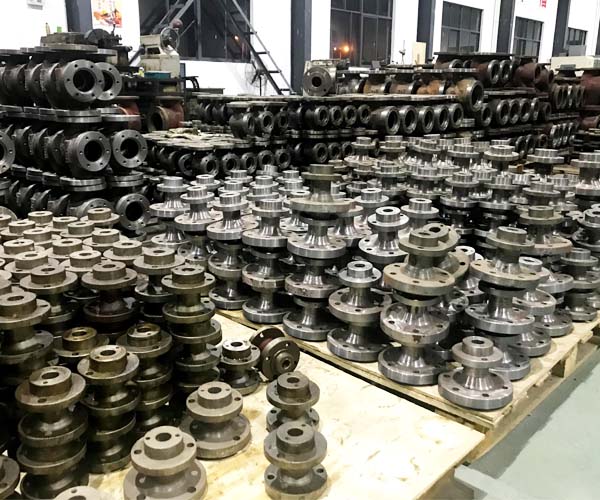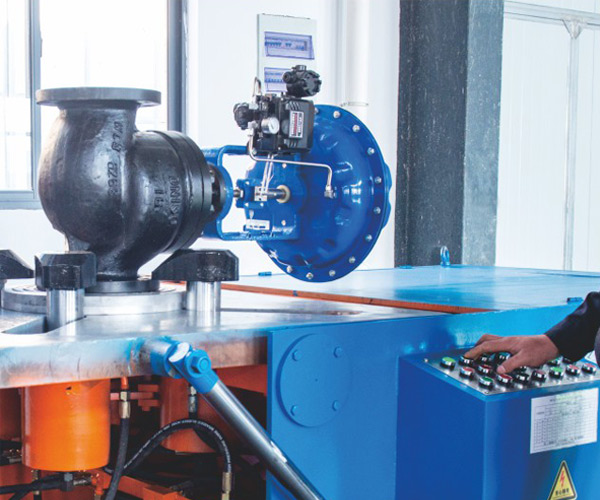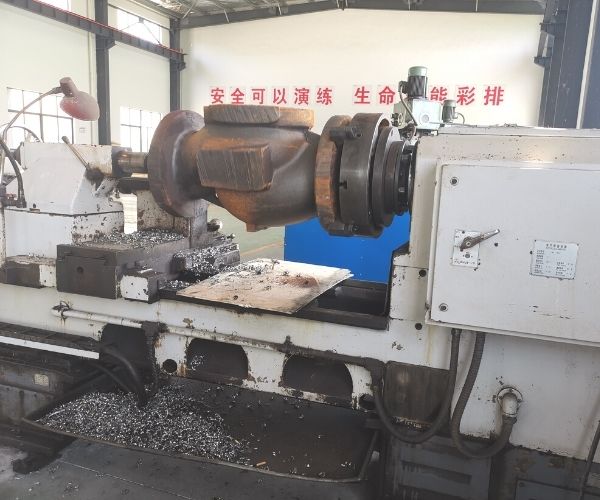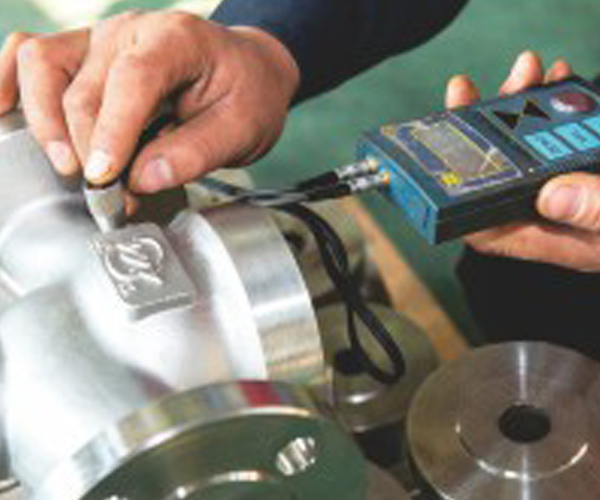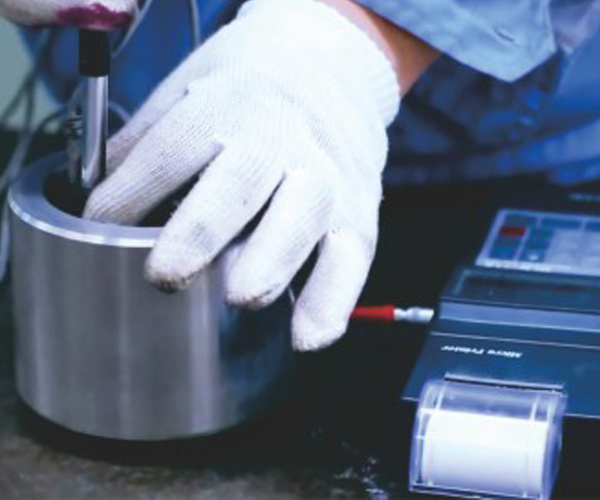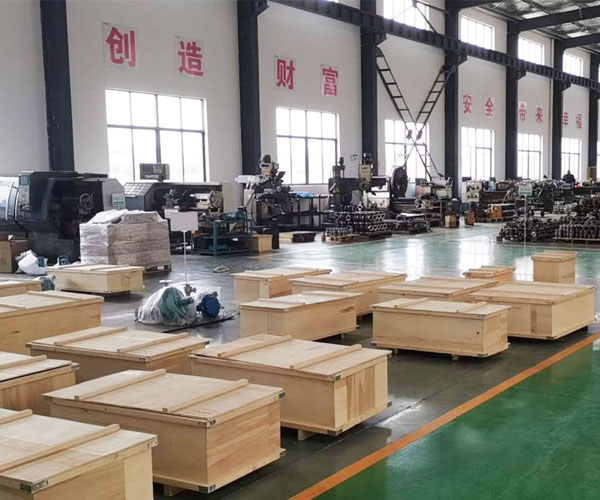Professional Pneumatic Angle Valve Manufacturer
●It belongs to a single valve seat with small leaks.
●Simple flow path with self-cleaning performance that can be applied to unclean media.
●Small flow resistance.
●Occasion requiring an angular connection.
●The valve body is easy to forge roughly.
●Control flow and reduce pressure.
●Available in various designs and sizes.
Get in Touch with Us
BCST your Expert Pneumatic Angle Valve Supplier in China
BCST pneumatic angle valve has an inlet and an outlet port, which are perpendicular. It is classified as manual valves and is generally used to prevent or control the flow of a liquid through a pipe. This is the reason for it is sometimes called simply a stop valve. Shut-off valves are valves that completely block the flow of liquid through the pipe. But angles are mainly used as regulating devices in residential plumbing and industry.
BCST pneumatic angle valves are mainly used for two reasons when there is a need to upgrade or renew the faucet or other fixtures. First, instead of cutting the flow of water in the entire house or building, the angle valves can be used to shut off the water to just that single apparatus or fixture that needs to be fixed. At the time of water leakage or even a complete burst, you can use the angle stop to shut off the flow to that appliance or fixture until the proper repairs are made.
BCST your One-Stop Pneumatic Angle Valve Solution in China
BCST pneumatic angle valve is used in many applications. It has diverse applications ranging from domestic uses in a home to industrial uses. The angle valve is a crucial part of many types of machinery and helps in the safe processing of various liquids, chemicals, and gases.
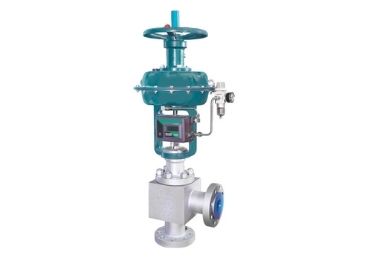
Pneumatic Angle Control Valve
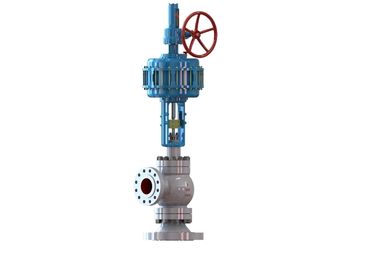
Pneumatic Handwheel Angle Control Valve
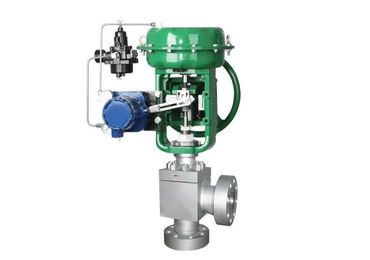
Pneumatic High Pressure Angle Control Valve
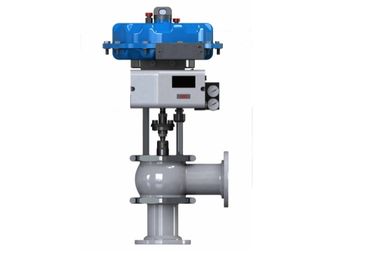
Pneumatic Sanitary Angle Control Valve
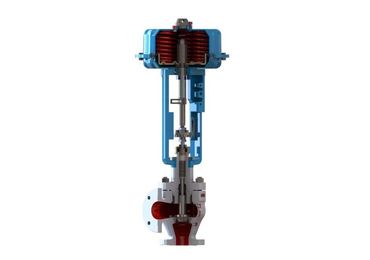
Pneumatic Single Seat Angle Control Valve
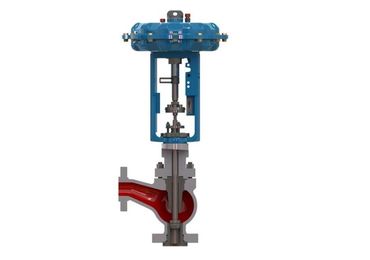
Pneumatic Sleevel Angle Control Valve
BCST your BEST Supplier for Pneumatic Angle Valve
BCST is a professional manufacturer with 20 years of experience in pneumatic angle valves, control valves, butterfly valves, ball valves, gate valves, and valve accessories, similar to selectors and positioners. BCST is a registered global brand, substantially concentrated on instrumentation and control valves.
We supply a one-stop result for inflow dimension and control result. BCST has cooperated with transnational brands like Rotork, Siemens, ABB, and China National Petroleum Corporation. Our products are exported to over 100 countries worldwide.
BCST has enough raw materials in stock and professional technical staff that can quickly realize your unique requirements. In addition, BCST has over 20 times of product history and ten times of export experience. BCST gives you the best result for pneumatic angle valves solutions.
Talk to our experts at www.bcstvalve.com.
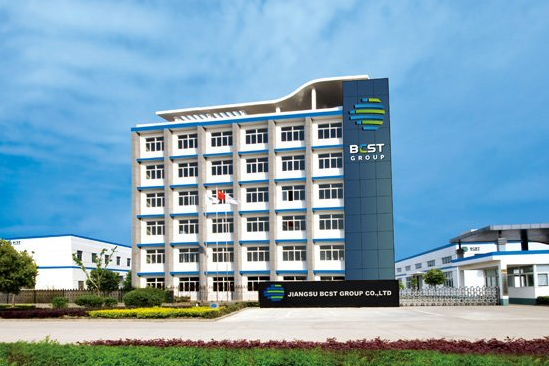
BCST Pneumatic Angle Valve Quality Control
- Technical software caculation
- Technical team meeting
- CAD drawing confirmation
Assembly
- Installation
- Calibration
- Chemical Analysis
- Mechanical Propery
- dimension Checks
- Visual Checks
- Non-destruction Examination
Hydrostatic Test
- Shell test
- Sealing test
- Leakage test
- Air test
- Function test
- CNC machining
- Visual checks
- Dimensional checks
- Liquid penetration test
Outlook Treatment
- Surface Polish
- Painting
- Visual inspection
- Thickness checks
- Visual checks
- Liquid penetration
- Test
- Hardness test
- Lapping
- Dimensional checks
Packing
- Marking
- Exported wooden box
Get the Latest Catalogue Now!
BCST Supply BEST Pneumatic Angle Valve Solution For your Project
Pneumatic Angle Valve -FAQ
What are the instructions to install the pneumatic angle seat valve?
- Always select the direction of the installation according to the conditions of the applications
- Before moving ahead with the installation, make sure that the pipelines are clean particularly if they are new. Rinse out the rusting and dust to avoid the impurities from damaging the Pneumatic Angle Valve.
- The support to the pipeline has to be firm and supportive without the presence of any vibration. You may require extra support if the Pneumatic Angle Valveis large for hanging it.
- Before starting the installation of the Pneumatic Angle Valve, must check the model, specifications, and parameters present on the label of the Pneumatic Angle Valve.
- Always make sure that you have to fulfil the requirements of the applications
- Checking the actuator and body of the body is necessary to receive assurance regarding the damage to the valve
- The source of the air has to be dry and clean when the Pneumatic Angle Valveis along with the controlling air supply.
- Pressure and capacity have to be sufficient for the application of the valve
- During the installation of the flanged valves, tightened the flanges from both ends in diagonal.
What is the Pneumatic Angle Valve along with the positioner?
Mainly, the use of a pneumatic angle seat valve is for adjusting the flow in the control valve. The medium stays in contact with the pneumatic angle seat valve and the position is of stainless steel as well as PTFE. You can use this valve in vacuum conditions. Depending on the design of the pneumatic angle seat valve with no dead angle, the roughness of the surface is approximately Ra 0.4 micrometres and along with the embedded design on the seal of the valve. The use of the pneumatic angle seat valve alongside the positioner is useful in various sectors including food &beverages, chemical, pharmaceuticals, and many other industries. It is specifically appropriate for the flowing of the steam helps to regulate the control system.
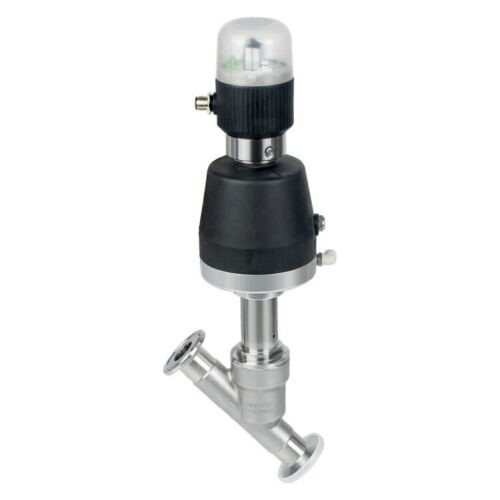
Valve positioner:
- The standard current supply is 0/4 to 20mA and the standard voltage is 0 to 0.5V
- Supportive towards both manual and automatic operations
- The self-tuning functionality present in the valve positioner
- DC power supply is 24V
- The grade for the protection is IP67
What is the role of the Pneumatic Angle Valve in Alumina production?
The Pneumatic Angle Valve is a type of control valve that mostly used is in the industrial sector to modernize the production processes. It offers sensitivity, and reliability while operating, and is economical to use. The Pneumatic Angle Valve is suitable for different mediums including steam, neutral gas, liquid, water, and corrosive gas. This is helpful in terms of increasing the service life and decreasing the rate of failure. These types of valves bring stability to the production and quality of the product. You can use the Pneumatic Angle Valve along with the accessories of the actuator for better performance. In the Alumina production, there are complexities in controlling the object, and conditions of the site can badly affect the Pneumatic Angle Valve. It can also cause accidents and you need to follow the preventive measures.
What are the main issues that arise in the Alumina production and what measures can you take to resolve them in terms of the Pneumatic Angle Valve?
Main issues in the Alumina production:
The slurry stream in the digestion of Alumina sterilizes the tank cools down and condensation takes place. It keeps flowing from the Pneumatic Angle Valve for storing the good water in the tank. After the inspection and analyzing the conductivity meter, slurry steam gets distributed towards the thermal power plant or station of the hot water for recycling purposes.
Reasons for the failure of the Pneumatic Angle Valve:
· Failure of the valve core
Many foreign particles and residues start to condensate inside the body of the Pneumatic Angle Valve for controlling the medium. The erosion results in the deformation and wearing of the valve core. The poor resistance of the Pneumatic Angle Valve can be the cause of its failure. A better solution is to use the fail-safe electric actuator for handling the failures.
· Failure of air source:
Due to the high vibration in the surroundings of the site, the gas pipe of copper breaks easily and causes damage. This makes the control unable to operate. At similar timings, the air source gets blocked because of the impurities and insufficiency in the air pressure.
· Leakage in the valve:
No replacement of the gasket on time can cause the leakage in the valves
Adoption of methods and measures:
- Depending on the requirements of the field’s conditions, you must use the Pneumatic Angle Valvethat has good wearing and is resistant to erosion. It also brings improvement in the inner structure of the valve core. It can meet the requirements and is difficult to block.
- The pipe of the gas source of the Pneumatic Angle Valvechanged to the metal-plastic along with the resistance of the pressure. In similar timings, in the gas source, there is an addition of a device for filtration and purification purposes. It also assures the stability in gas pressure from the source and fulfilling the requirements.
- Timely replacing the gasket during the maintenance so it meets the standards of the installation. This also includes qualifying for the pressure test and using the gasket within the limit.
Simply by following these measures, the Pneumatic Angle Valve follows the requirements of reproduction using the controlling the effects and reducing the pressure. It also increases the stability of working without causing any failure. This study shows that there is a visible decrease in the failure rate and selecting the Pneumatic Angle Valve for the future.
How you can install and disassemble the three-way Pneumatic Angle Valve?
Installation of three-way Pneumatic Angle Valve:
- You need to connect the valve along with the pipeline. Just make sure that the valve body is consistently in along with the fluid’s direction. (the arrow outside the valve’s body is the represents the direction of flowing fluid)
- Installation of welding: do detach the actuator while welding
- There is the possibility of normal installation. It can be a flange, thread, and quick installation
- During the installation process, you need to make sure that there are no residues in the pipeline and on the surface
- After the installation, inspection takes place and se
Disassembling of three-way Pneumatic Angle Valve:
- Before disassembly of the three-way Pneumatic Angle Valve, the air pressure inside the valve has to be released. There is the involvement of dismounting and after the disassembling protection of the seal and thread material
- The body of the three-way Pneumatic Angle Valve, connectivity of pipeline, and tightening need proper torque.
What are the advantages of using a three-way pneumatic angle seat valve?
- You can use oil, gas, and water as the medium. The working capacity of a three-way pneumatic angle seat valve is a million times more than other types of the valves
- The packing of the seal’s cover is of the double layer that adjusts automatically to the stem of the valve. The airtightness is superb.
- The seal ring is dustproof and the hammer guide is waterproof.
- Along with the pilot air pressure, there is zero leakage in the pneumatic angle seat valve
- The actuator is free from repair and consists of a piston ring along with a lifetime guarantee
- Open kind of pneumatic angle seat valve is without any vibration and the consumption of air is less than 40% while compared to other valves
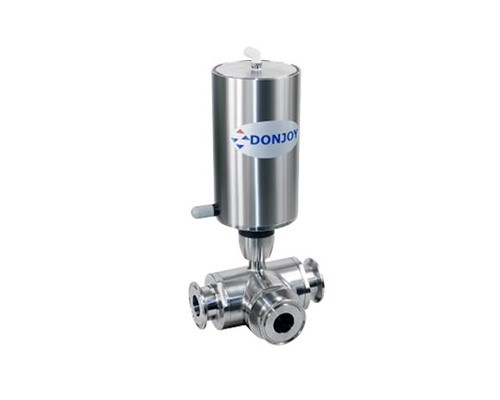
What is the working principle of the Pneumatic Angle Valve?
The Pneumatic Angle Valve follows the single-acting pneumatic actuator along with the spring protection to guide the angle seat valve to operate. While using the Pneumatic Angle Valve, you need to select the normally open or normally closed option. The composition of the Pneumatic Angle Valve is of stainless steel and polytetrafluorethylene to make it used for the steam, liquid, gas, and corrosive scenarios like pneumatic actuated valves. It consists of a radiator to protect the actuator and assurance to extend the life of the Pneumatic Angle Valve.
Action mode of the Pneumatic Angle Valve:
The single-acting (the pneumatic head consists of the hole); the working principle of the Pneumatic Angle Valve is dependent on the working of the spring return for opening and closing purposes. You can divide it into two types including normally open and normally close. Double acting (the pneumatic head has two holes such as a double-acting actuator. Its working principle is the air supply controlling the switch.
Features of the Pneumatic Angle Valve when the direction of the flow is high out and low in:
- While selecting the proper flow direction, there is an improvement in the service life of the Pneumatic Angle Valve.
- Whenever the flowing medium is liquid, select the direction of flow to avoid the impact of the hammer.
- The working pressure has to be below the 0.3MPa or else select the double-acting actuator.
The characteristics of the Pneumatic Angle Valve when the direction of the flow is high out and low in:
Whenever the operating medium of the Pneumatic Angle Valve is gas or steam, there is an obvious improvement in the sealing performance of the flow by the selection of the flow’s direction along with the sanitary angle seat valve. Moreover, the service of the Pneumatic Angle Valve has an impact on the V-ring present in its body along with the flowing medium. Whenever the working medium is liquid, then the hammer is not water-resistant.
Safety measures you must observe and apply:
- Always clean the pipelines on time and make them free from pollution
- Follow the installation requirements and direction of the flow. The pneumatic control valve actuator has to face an upward direction.
- Whenever you are connecting the Pneumatic Angle Valve, focus and make sure that there is an alignment in the pipe. You can also remove the actuator when there are customized requirements of the customer
- Before opening or maintaining the Pneumatic Angle Valve, cut the connection along with the fluid and manage the air source. This is for the reduction of the pressure present in the pipeline system.
What is the pneumatic angle seat valve along with the control unit?
Application of pneumatic angle seat valve along with the control unit:
The pneumatic angle seat valve along with the control unit is just a typical switch present in an automatic controlling system. Mostly, its use is in dyeing, printing, food, washing, treatment for the water, pharmacy, and other automatic machinery along with the equipment. It consists of a water hammer for protection purposes, is free from noise, and reliability in terms of sealing performance.
Designing features:
- Type of connection: thread, flange, and clamp
- Size: ½ inches-3 inches
Control unit:
- For the feedback regarding the position, you can view when there is a green light and red light means off.
- The solenoid valve is built-in
- There is an inching button in the manual designing
- Power supplyà24V DC supply
What are the troubleshooting issues in the Pneumatic Angle Valve?
Mostly the troubleshooting issues in the Pneumatic Angle Valve are typical compared to the electrical valves. There are two categories regarding the Pneumatic Angle Valve that includes double acting (air open and close) and spring return ( spring close/air open or vice versa).
Double-acting pneumatic:
Troubleshooting issues | Solution |
The Pneumatic Angle Valve is unable to open or close | · Check air pilot pressure of the system is always above the minimum operating pressure of the actuator (mostly 90 psi or 6 bar) · Check the alignment of the Pneumatic Angle Valve is along with the butterfly valves and flanges · If everything is Ok then apply the power supply. · Make sure that there is a supply of power · All the voltages supplied in the coil need to be accurate and mounding on the coil. · If the coil is not an open circuit, then use the multimeter |
Slightly leakages in the Pneumatic Angle Valve during the first commission
| · Always clean the seat of the Pneumatic Angle Valve and test it again · Adjusting the actuator is necessary to make it stop whenever the valve is completely close |
Spring return pneumatic:
Not opening the valve | · Same as double-acting pneumatic · If it is essential to remove the actuator, use the spanner for checking the Pneumatic Angle Valve. |
Leakage in the Pneumatic Angle Valve | · same as double-acting pneumatic |
What is the design of the plastic actuator Pneumatic Angle Valve?
- It helps in visualizing the position indicator
- You can easily install the plastic actuator Pneumatic Angle Valve
- The capacity is big enough and wastage is low
- All the inners of the plastic actuator Pneumatic Angle Valveare lubricative so it requires less maintenance
- The material of the actuator is stainless steel, plastic, and Aluminum
- For increasing the life of the piston pole, there is the sealing of PTFE.
- No effect of water hammer as whenever the liquids flow under Pneumatic Angle Valve. The hammer absorbs it all.
- It is extremely useful in air and water controlling systems


